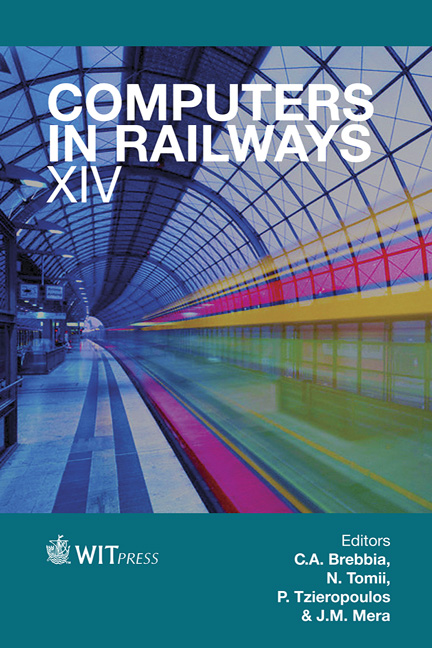Numerical Simulation On Wind Pressure Transients In High Speed Train Tunnels
Price
Free (open access)
Transaction
Volume
135
Pages
9
Page Range
905 - 913
Published
2014
Size
1,076 kb
Paper DOI
10.2495/CR140761
Copyright
WIT Press
Author(s)
S.-W. Nam
Abstract
When a train passes through a tunnel with high speed, pressure waves are generated due to the entry of the front and the rear of the train respectively. These pressure waves are alternately propagated and reflected at the exit and entrance of the tunnel. Severe pressure transients cause the repeated fatigue load to the car-body and tunnel wall, ear-discomfort to passengers, and micro pressure wave to the surroundings of the tunnel exit. To clarify quantitative pressure change in the tunnel is very important for the optimal design of the tunnel size. Partial differential equations also can be converted into ordinary differential equations by using the method of characteristics. In this study, we have developed a simulation program to calculate pressure transients in a railroad tunnel. The method of characteristics based on a fixed mesh system is used to solve the governing equations. By using this program, we have predicted pressure transients in KTX (Korea Train eXpress)-tunnel and compared with experimental results that are obtained in Unju tunnel with KTX high speed trains. The results of calculation coincide with the ones of the Unju tunnel tests, and the pressure transient mechanism was made clear. To analyze the effects of train speed and blockage ratio, we have conducted parametric simulations. The results show that pressure rise in a tunnel is proportional to the square of train speed and to the blockage of train/tunnel cross sectional area. Keywords: wind pressure, high speed train, tunnel flow, pressure wave.
Keywords
wind pressure, high speed train, tunnel flow, pressure wave.





